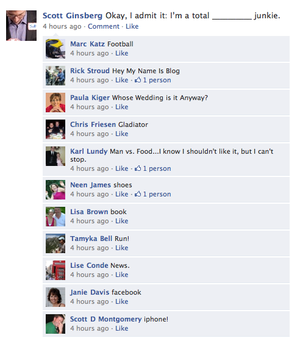Marketing tip #1: Create a love affair with your customers
November 1, 2010
 Satisfaction is nice. Loyalty is good. Repeat business is dandy.
Satisfaction is nice. Loyalty is good. Repeat business is dandy.
But none of that is love. And if you really want to get and keep a customer for life — you have to be willing to stick your neck out and love them. You need to put your heart on your sleeve and woo them.
You need to create a love affair
with your customers.
Why? Let me give you 5 good reasons.
It feels good: No matter what you sell — it feels better to serve people you care about. It's easier to go the extra mile for customers that are special. It helps elevate your work to noble work. As my friend Steve Farber says…"do what you love in the service of people who love what you do."
It's easier to sell more to a current customer who loves you, than a new customer: In fact, recent studies show that it 6-7 times more costly to acquire a new customer than it is to retain an old (in love) one.
It's more profitable: Boosting your customer retention up by as little as 5% can elevate your profits by 5-95%. New customers are more price sensitive and require a huge amount of up front time, even after you've closed the deal.
It generates word of mouth: When a customer loves you, they can't help but talk about you to others. When you make them feel special and go out of your way to love them — they will be your most powerful marketing tool — advocates who spread word of mouth.
It's incredible for employee retention: Who doesn't want to work at a place that gives them permission to be incredibly kind and considerate? Who wouldn't love to hear customers rave about them? Who isn't looking for a way to put more meaning into their work? Why not make it a labor of love!
Is there a business who has created a love affair with you? How does it feel to be on the receiving end of that kind of attention?
The real question in my mind is — why wouldn't you create a love affair with your customers?
More


















![Reblog this post [with Zemanta]](http://img.zemanta.com/reblog_e.png?x-id=d87ac214-ef1a-4305-a047-4d27550547d2)

![Reblog this post [with Zemanta]](http://img.zemanta.com/reblog_e.png?x-id=684a02f1-9e79-4006-9bcb-5f626556a939)